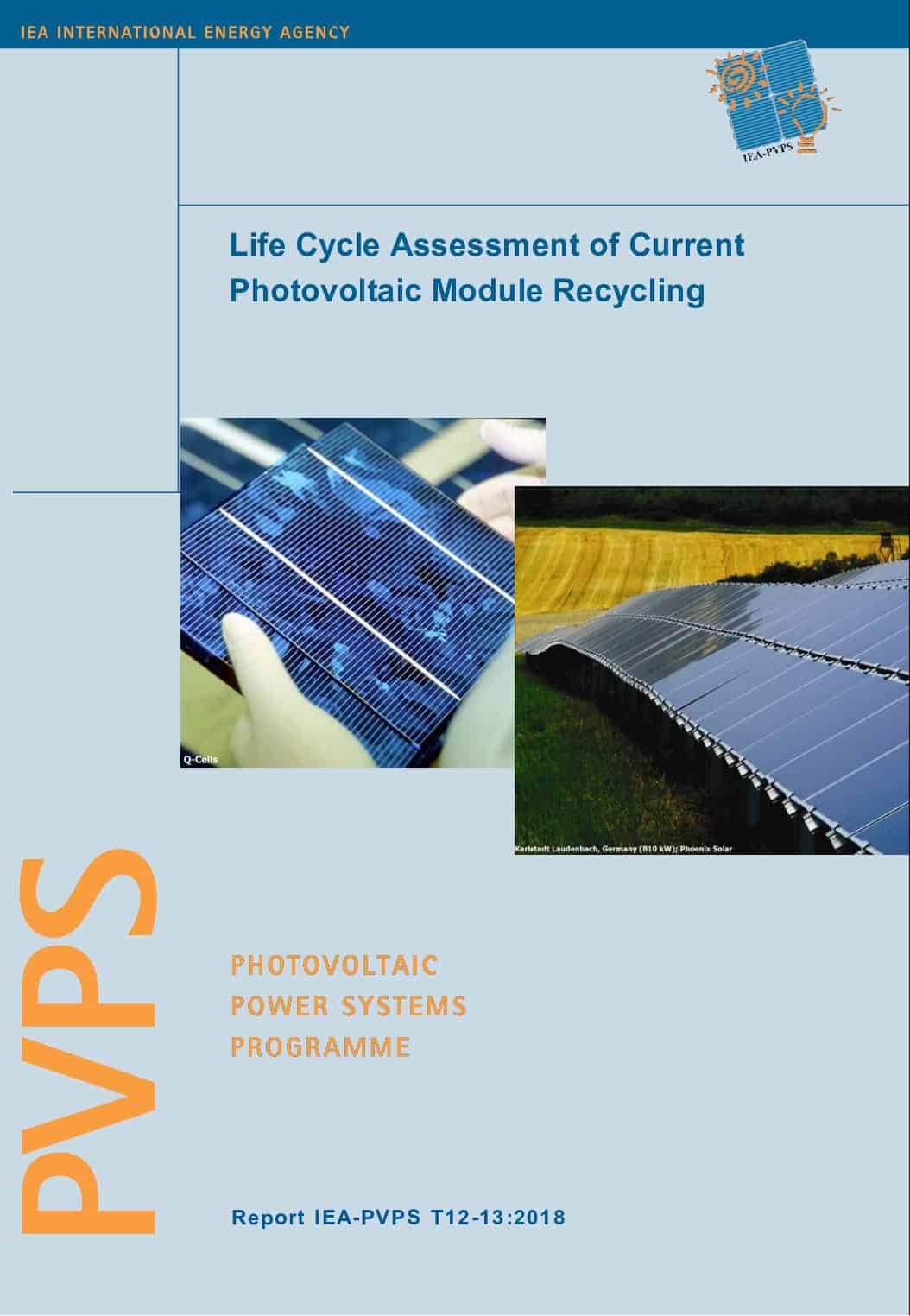With the rapid and accelerating growth of PV module installation and an increase of PV modules from the nineteen eighties and nineties reaching the end of their 30 year lifespan, their proper end of life treatment gets into focus. This report deals with the approaches, the environmental impacts and the recovered materials of PV module recycling. In this report, the environmental life cycle assessment of the current generation recycling of crystalline silicon (c-Si) and cadmium telluride (CdTe) PV modules is described. Due to the still limited waste stream today, c-Si PV modules are mainly treated in recycling plants designed for treatment of laminated glass, metals or electronic waste. Only the bulk materials glass, aluminium and copper are recovered, while the cells and other materials such as plastics are incinerated. CdTe PV modules have been treated in dedicated recycling plants for many years and life cycle inventories of this process have been published. The semiconductor is recovered in addition to glass and copper.
Life cycle inventories of the recycling of current c-Si and CdTe PV modules are compiled following two modelling approaches related to recycling. The cut-off approach uses economic allocation to divide the total efforts of the recycling process between the treatment of the used PV module and the recovered products. The end-of-life approach considers the recycling process separately from the potentially avoided burdens due to recovered materials. The life cycle inventories of c-Si PV module recycling are based on data obtained from four European recyclers surveyed between 2015 and 2016. For CdTe PV module recycling, the life cycle inventories were established based on published data for the First Solar recycling facility in Germany. The life cycle impact assessment is done based on six environmental indicators previously identified as most relevant for PV electricity: particulate matter, freshwater ecotoxicity, human toxicity non-cancer effects, human toxicity cancer effects, mineral, fossil and renewable resource depletion and climate change.
The life cycle inventories according to the cut-off approach can be applied to complement existing life cycle inventory data on PV systems. The environmental impacts of the recycling of c-Si PV modules are very small (maximum 1.1 %) compared to the impacts caused by the production of a 3 kWp residential PV system mounted on a slanted roof. In the case of CdTe PV module recycling, the treatment of the PV panels has the highest but still rather minor contribution in the indicator climate change (4.8 %).
The life cycle inventories according to the end-of-life approach allow an assessment of the net environmental benefits of recycling. The recovery of glass, metals, and semiconductor material from c-Si and CdTe PV modules causes lower environmental impacts than the extraction, refinement and supply of the respective materials from primary resources. The highest potential benefits are observed in the indicator mineral, fossil and renewable resource depletion.
The data quality of the recycling of c-Si PV modules is classified as fair since only limited information is available. In contrast, the data quality of CdTe PV module recycling is considered very good. The study was financed by the Swiss Federal Office of Energy (SFOE) and carried out in the framework of the Task 12 of the Photovoltaic Powers System Programme (PVPS) of the International Energy Agency (IEA).
